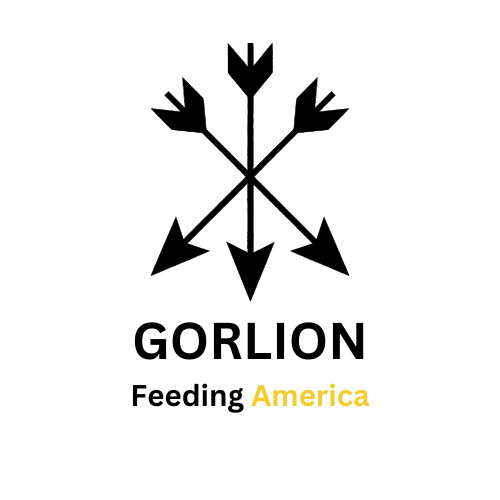In the world of agricultural commodities, the relationship between inflation, monetary policy, and market trends has always played a pivotal role. As agricultural commodity buyers in the food and beverage industry, it is crucial to understand the dynamics shaping the prices of essential raw materials. In this opinion editorial, we will explore the current state of agricultural commodity prices, delve into historical data, and provide a realistic future outlook. We will also examine the Federal Reserve’s role in battling inflation and its potential impact on the industry.
The Impact of the Federal Reserve’s Monetary Policy on Agricultural Commodities:
The Federal Reserve, mandated to foster economic growth while maintaining inflation under control, has set a target inflation rate of 2%. However, since the financial crisis of 2008-2009, the Fed has struggled to achieve this target, with inflation consistently remaining below 2%. The recent surge in commodity and input prices has raised concerns about the feasibility of the 2% target and its potential consequences for agricultural commodity prices.
Historical Analysis and Current Landscape:
Historical data reveals a clear link between the Federal Reserve’s monetary policy, currency strength, and agricultural commodity prices. As the Federal Reserve has raised interest rates over the past year, aiming to manage inflation and stabilize the economy, the resulting stronger US dollar has kept agricultural and soft commodity prices at bay. This has impacted farmers and agricultural producers, leading to reduced revenues and profitability.
However, signs of an economic slowdown have emerged, prompting expectations of a pause and potential rate cuts by the Federal Reserve. The mounting US debt, which has reached trillions of dollars, further adds to the potential weakness of the dollar. As a result, a reversal in the current trend of low commodity prices is anticipated.
Future Outlook: Agricultural Commodity Prices in an Inflationary Landscape:
Considering the potential reversal in monetary policy, along with the weakening US dollar, agricultural commodity prices are likely to undergo significant changes. As the dollar weakens, commodities priced in dollars become more affordable for international buyers, potentially driving up demand and prices. This, in turn, may provide relief to farmers and agricultural producers through increased export opportunities, boosting their revenues and profitability.
Recent developments have already shown the impact of a potential shift in monetary policy. On June 14, 2023, the Federal Reserve paused raising rates well before reaching its 2% inflation target. As a result, commodity prices experienced a sharp increase the following day, with corn up over $24, wheat up over $32, and soybeans up over $50. The trend continued on June 16, with corn increasing by another $15, wheat by another $28, and soybeans by another $41. These events validate the predictions made by Gorlion Corporation in our previous articles, which you can find by clicking the links April 3, 2023 Article: The Federal Reserve’s Impact on Food Manufacturers and June 5, 2023 Article: The Future of Agricultural and Soft Commodity Prices.
The Federal Reserve’s Future Course:
Despite the recent statements by Federal Reserve members suggesting further rate hikes, the economic data indicates an ongoing slowdown. It is reasonable to question whether the Federal Reserve is bluffing, considering the prevailing circumstances. As agricultural commodity buyers, it is crucial to stay informed, understand the market dynamics, and adapt to the changing landscape.
Protecting Your Business in an Inflationary Environment:
In the face of potential inflationary pressures and a shifting economic landscape, it is crucial for agricultural commodity buyers to take proactive steps to safeguard their businesses. Here are a few recommendations for navigating these uncertain times:
1. Diversify Sourcing: Explore alternative sourcing options for agricultural commodities to mitigate the risks associated with price fluctuations. Identify suppliers from different regions to counter the impact of currency movements and ensure a stable supply chain.
2. Risk Management: Engage in hedging strategies such as futures contracts or options to lock in commodity prices in advance. This allows for securing prices at favorable levels and protects against sudden price surges.
3. Enhance Operational Efficiency: Improve production processes, optimize the supply chain, and implement cost-saving measures to offset increased commodity costs. Investing in technology and automation can lead to long-term savings.
4. Foster Innovation: Explore alternative ingredients or formulations that are less reliant on expensive commodities. Adapting recipes or introducing new products can mitigate the impact of rising prices and ensure a competitive edge.
5. Collaborative Partnerships: Build strong relationships with suppliers, distributors, and customers. Collaborative partnerships can help negotiate favorable pricing agreements, secure long-term contracts, and foster innovation and resilience throughout the supply chain.
6. Stay Informed: Continuously monitor market trends, conduct thorough market research, and leverage reliable forecasting tools. This information will provide valuable insights into future price movements, guide decision-making, inform pricing strategies, and help manage inventory effectively.
Conclusion:
The story of inflation in agricultural commodities is a complex one, intertwined with the Federal Reserve’s monetary policy and economic trends. As agricultural commodity buyers, it is crucial to stay ahead of the curve and navigate the challenges that lie ahead. Gorlion Corporation, with our market maker business model enhanced by artificial intelligence, is equipped to guide you through these uncertain times.
We have accurately predicted the recent surge in agricultural commodity prices following the Federal Reserve’s pause in rate hikes, showcasing our expertise and ability to anticipate market movements. Our commitment to providing valuable insights and our comprehensive approach to agricultural commodity trading make us the smartest choice for your agricultural commodity procurement.
To learn more about Gorlion Corporation and how we can help you navigate the inflationary landscape in agricultural commodities, contact us today. Together, let us make informed decisions and thrive in an ever-changing economic environment.

